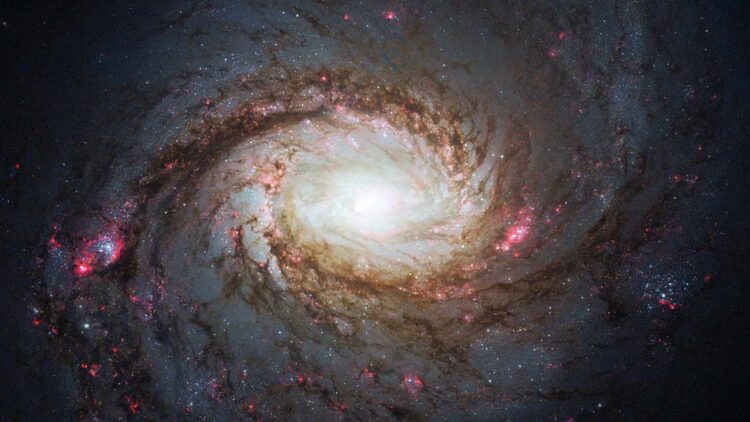The Hubble Space Telescope has been a huge help in taking images in the sky for years now. Thanks to its lenses we have been able to discern a myriad of new celestial objects that we could not see before and improve our knowledge of space. Now, it has taken a new snapshot of the spiral galaxy Messier 77, also nicknamed the Squid Galaxy, and it is quite the picture.
The Squid Galaxy is, like most other galaxies, a cosmic swirl located 45 million light-years from Earth, tucked away in the Cetus constellation, which is Latin for “The Whale.” The original name of the galaxy, Messier 77 goes back to the 18th century, to when a French astronomer named Charles Messier put together a list of things in the sky that were not comets.
While this early astronomer work can seem useless nowadays, at the time they did not have even a small fraction of the tech we now have and Mr. Messier wished to study comets, so he put the list together to avoid distractions by other celestial bodies. Another French astronomer, Pierre Méchain, who was also a comet enthusiast and a contemporary of Mr. Messier, managed to glimpse what would later be named Messier 77, which was a feat considering it was 1780 and there was a serious limitation on what could be seen in the sky.
The Squid Galaxy, and object very far away that comes nearer every time we study it
Since at the time most celestial objects that were that far away were mistaken by fuzzy objects or just part of the Milky way, Messier and Méchain attributed what they had seen to a spiral nebula or maybe a bunch of stars mashed together, something that would hold up for over a hundred years. It was not until technology improved and we could see better what is in space that astronomers realized that these strange spiral shapes were completely separate from the Milky Way and that there were many other galaxies, like Messier 77 that were completely different systems that coexisted with us in the sky.
At the time, when someone looked at the sky and saw the Squid Galaxy all they would have seen is a very bright core wrapped in a cloudy haze, which is likely why astronomers were so sure that it was just stars surrounded by a bit of gas or dust and not an entirely different galaxy, which we can now fully appreciate even from Earth.
But since the original name of the galaxy is Messier 77, why change it and give it the nickname Squid Galaxy? Well, apart from being a much more fun nickname, it is inspired by the morphology of the galaxy. It has wispy, thread-like extensions which wrap around the galaxy like squid arms, giving it a pretty dramatic and unique look, which we could not have seen if it was not for the upgrades in technology, not only in the last few years, but in the Hubble telescope.
This is because this is not the first time that Hubble has taken a picture of the Messier 77, back in 2013 we had the first clear picture of this galaxy, but this new image is much better due to the new different filters and newer image processing techniques that Hubble has been outfitted with. Thanks to these upgrades, astronomers can now spot a lot more details than before, which they can now also share much more easily thanks to the spread of Social Media. When it comes to galaxies that are so far away, every bit of clarity helps peel back more of the mystery, and in the future we will have even more details to share, hopefully from even closer.

